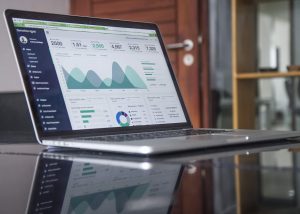1

As an emerging field, there is no one definition of the term learning analytics. However, the definition that many in the field reference is the one presented at the 1st International Conference on Learning Analytics and Knowledge, “the measurement, collection, analysis and reporting of data about learners and their contexts, for the purposes of understanding and optimising learning and the environments in which it occurs” (Siemens, 2011).
While institutions collect and analyze much student data, the term “learning analytics” is more specific than the term “academic analytics,” which refers to as “the application of business intelligence in educational contexts and emphasizes analytics at the institutional level“ (Long & Siemens, 2011, p.34).
Table 1
Comparison of Learning and Academic Analytics
|
Type of Analytics |
Level of Analysis |
Users |
|
|
Course-level: social networks, conceptual development, discourse analysis |
Educators, learners |
|
Departmental: predictive modeling, patterns of success/failure |
Educators, learners |
|
|
Academic Analytics |
Institutional: learner profiles, performance of academics, knowledge flow |
Administrators, funders, marketing, |
|
Regional (provincial): comparisons between systems |
Funders, administrators |
|
|
National and International |
National governments, education authorities |
Note. Adapted from Long & Siemens (2011).
As Table 1 shows, learning analytics focuses on the learning process at the course or departmental level, whereas academic analytics examines on more general analysis of data at institutional, regional, national, and international levels. Furthermore, these authors propose the following cyclical development of learning analytics: (1) course-level analysis of traces, networks, and discourse; 2) educational data mining for predictive modeling, clustering, and pattern mining; 3) intelligent curriculum to develop semantically defined curricular resources; 4) adaptive sequence of content based on learner behavior and recommender systems; and 5) adaptive learning.
In practice, learning analytics can be considered as a form of educational data mining —the application of data science techniques to student data such as demographic information, online course activity, assessments, and grades— to present metrics to educators and students that may improve their teaching and learning (Lester et al., 2017; Wilson, Watson, Thompson, Drew, and Doyle, 2017).
The focus on “big data” analytics has created a new societal concern about privacy and surveillance, and issues around ensuring privacy and ethical use of student data in learning analytics is a topic that will be explored in a later section of the guide.

